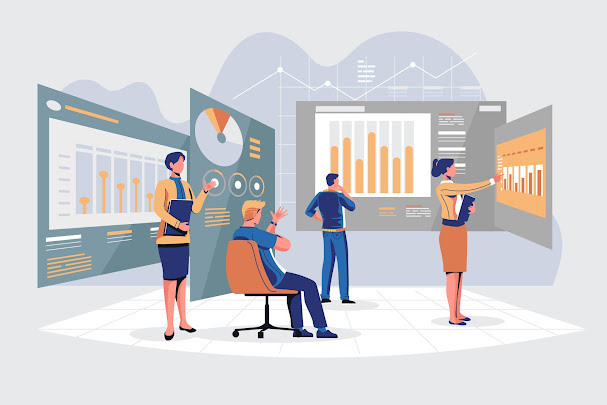The business intelligence (BI) landscape is evolving rapidly, driven by advancements in data analytics and technology. As companies increasingly rely on data to guide their strategies and operations, staying ahead of emerging trends is crucial. Here, we explore the key trends in data analytics that are shaping the future of business intelligence, and how these trends can provide a competitive edge for your company.
1. Advanced Analytics and AI Integration
One of the most significant trends in business intelligence is the integration of advanced analytics and artificial intelligence (AI). Traditional BI tools have primarily focused on descriptive analytics—reporting what has happened. However, the future lies in predictive and prescriptive analytics, which forecast future outcomes and recommend actions.
AI and machine learning algorithms enable data analytics solutions to uncover patterns and insights that are not immediately obvious. These technologies can analyze vast amounts of data quickly and accurately, providing deeper and more actionable insights.
For example, predictive analytics can help retailers forecast product demand, optimize inventory levels, and reduce waste. In healthcare, AI-driven analytics can predict patient outcomes and improve treatment plans. As AI and advanced analytics become more integrated into BI platforms, businesses will be able to make smarter, data-driven decisions.
Discover how our data analytics services leverage AI to provide advanced insights for your business.
2. Real-Time Data Processing
The demand for real-time data processing is growing as businesses seek to make timely decisions based on the most current information available. Real-time data analytics allows companies to monitor operations, customer interactions, and market trends as they happen, enabling immediate responses to emerging issues and opportunities.
Real-time analytics is particularly valuable in industries such as finance, retail, and logistics, where timely decision-making can significantly impact performance. For example, financial institutions can use real-time analytics to detect fraudulent transactions instantly. Retailers can adjust pricing and promotions in response to real-time sales data.
As the technology for real-time data processing becomes more accessible and affordable, more businesses will adopt it to enhance their agility and responsiveness.
3. Increased Focus on Data Privacy and Security
With the rise of data breaches and stringent regulations like GDPR and CCPA, data privacy and security have become paramount concerns for businesses. Companies must ensure that their data analytics practices comply with legal requirements and protect sensitive information from unauthorized access.
Future trends in data analytics will likely involve greater emphasis on data governance, encryption, and anonymization techniques. Businesses will need to adopt robust security measures to safeguard their data while still deriving valuable insights from it.
Implementing secure data analytics solutions not only helps companies comply with regulations but also builds trust with customers and partners, enhancing their reputation and competitive edge.
4. Augmented Analytics
Augmented analytics is another trend set to revolutionize business intelligence. It involves using AI and machine learning to automate data preparation, insight discovery, and sharing. This trend aims to make data analytics more accessible to non-technical users, allowing them to derive insights without extensive expertise in data science.
Augmented analytics tools can automatically identify trends, generate insights, and create visualizations, enabling users to focus on decision-making rather than data manipulation. This democratization of data analytics empowers employees across the organization to leverage data in their daily tasks.
For example, a marketing team can use augmented analytics to quickly analyze campaign performance and adjust strategies on the fly. Sales teams can identify potential leads and tailor their pitches based on data-driven insights.
5. Data Democratization
Data democratization refers to the process of making data accessible to all employees within an organization, regardless of their technical expertise. This trend is driven by the need for more agile and responsive business operations. By providing employees with the tools and training to access and analyze data, companies can foster a data-driven culture.
Self-service BI tools are becoming more prevalent, allowing users to create their own reports and dashboards without relying on IT or data specialists. This not only speeds up decision-making but also encourages innovation and collaboration across departments.
As more businesses adopt data democratization, they will need to focus on data literacy programs to ensure employees can effectively interpret and use data. Investing in user-friendly BI tools and training will be essential for maximizing the benefits of this trend.
Conclusion
The future of business intelligence is being shaped by several key trends in data analytics. Advanced analytics and AI integration, real-time data processing, increased focus on data privacy and security, augmented analytics, and data democratization are all transforming the way businesses operate and compete. By staying ahead of these trends and leveraging cutting-edge data analytics services, companies can unlock new opportunities, drive growth, and maintain a competitive edge in an increasingly data-driven world.

Comments
Post a Comment